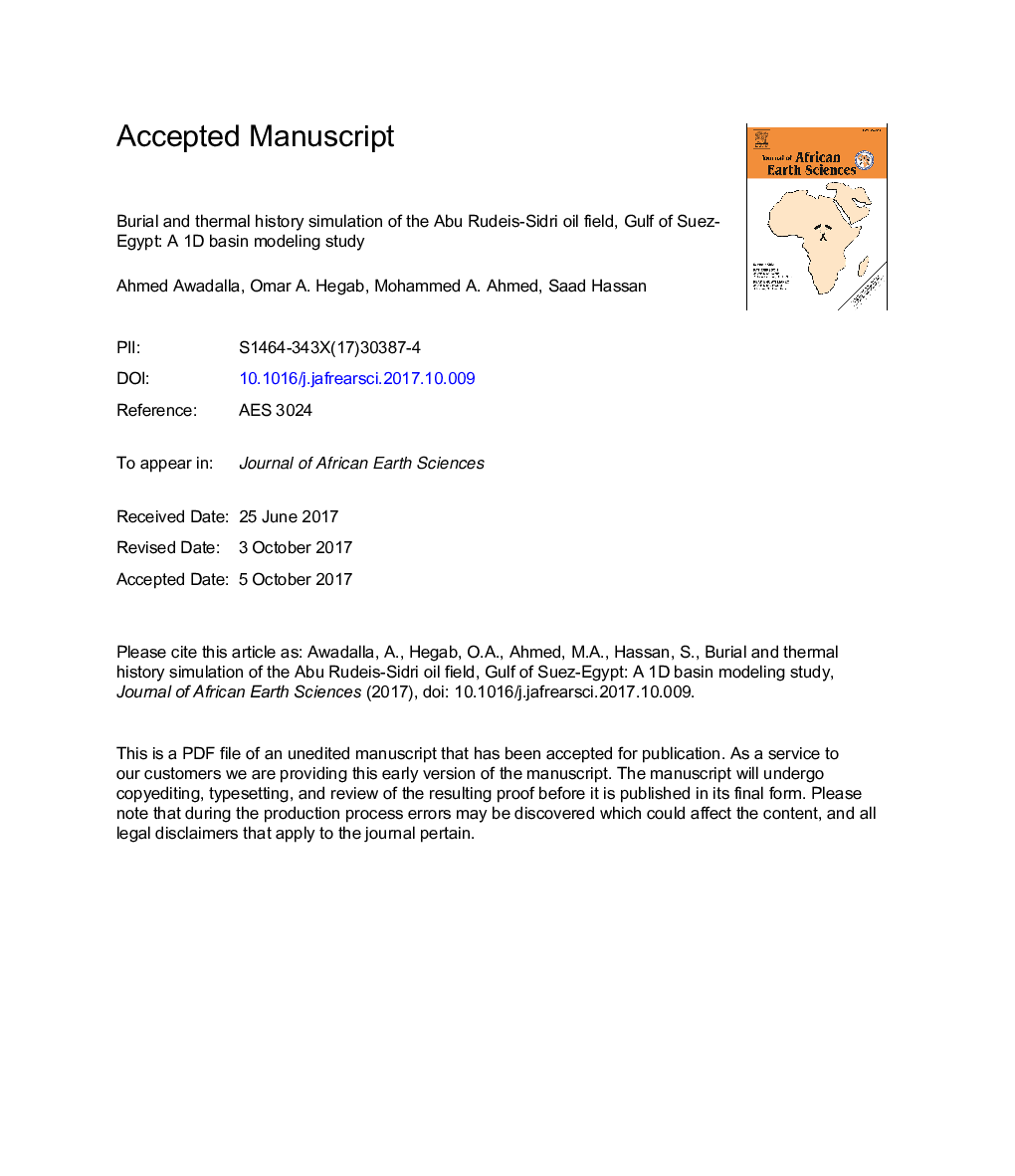| کد مقاله | کد نشریه | سال انتشار | مقاله انگلیسی | نسخه تمام متن |
|---|---|---|---|---|
| 8913649 | 1640170 | 2018 | 32 صفحه PDF | دانلود رایگان |
عنوان انگلیسی مقاله ISI
Burial and thermal history simulation of the Abu Rudeis-Sidri oil field, Gulf of Suez-Egypt: A 1D basin modeling study
دانلود مقاله + سفارش ترجمه
دانلود مقاله ISI انگلیسی
رایگان برای ایرانیان
کلمات کلیدی
موضوعات مرتبط
مهندسی و علوم پایه
علوم زمین و سیارات
زمین شناسی
پیش نمایش صفحه اول مقاله

چکیده انگلیسی
An integrated 1D model on seven wells has been performed to simulate the multi-tectonic phases and multiple thermal regimes in the Abu Rudeis-Sidri oilfield. Concordance between measured and calculated present-day temperatures is achieved with present-day heat flows in the range of 42-55 mW/m2. Reconstruction of the thermal and burial histories provides information on the paleotemperature profiles, the timing of thermal activation as well as the effect of the Oligo-Miocene rifting phases and its associated magmatic activity. The burial histories show the pre-rift subsidence was progressive but modest, whereas the syn-rift was more rapid (contemporaneous with the main rifting phases and basin formation). Finally, the early post-rift thermal subsidence was slow to moderate in contrast to the late post-rift thermal subsidence which was moderate to rapid. The simulated paleo heat flow illustrates a steady state for the pre-rift phase and non-steady state (transient) for syn-rift and postrift phases. Three geothermal regimes are recognized, each of which is associated with a specific geological domain. 1) A lower geothermal regime reflects the impact of stable tectonics (pre-rift). 2) The higher temperature distribution reflects the syn-rift high depositional rate as well as the impact of stretching and thinning (rifting phases) of the lithosphere. 3) A local higher geothermal pulse owing to the magmatic activity during the Oligo-Miocene time (ARM-1 and Sidri-7 wells). Paleoheat flow values of 100mW/m2 (Oligo-Miocene rifting phase) increased to 120mW/m2 (Miocene rifting phase) and lesser magnitude of 80mW/m2 (Mio- Pliocene reactivation phase) have been specified. These affected the thermal regime and temperature distribution by causing perturbations in subsurface temperatures. A decline in the background value of 60mW/m2 owing to conductive cooling has been assigned. The blanketing effect caused by low thermal conductivity of the basin-fill sediments has been simulated as well.
ناشر
Database: Elsevier - ScienceDirect (ساینس دایرکت)
Journal: Journal of African Earth Sciences - Volume 138, February 2018, Pages 86-101
Journal: Journal of African Earth Sciences - Volume 138, February 2018, Pages 86-101
نویسندگان
Ahmed Awadalla, Omar A. Hegab, Mohammed A. Ahmed, Saad Hassan,